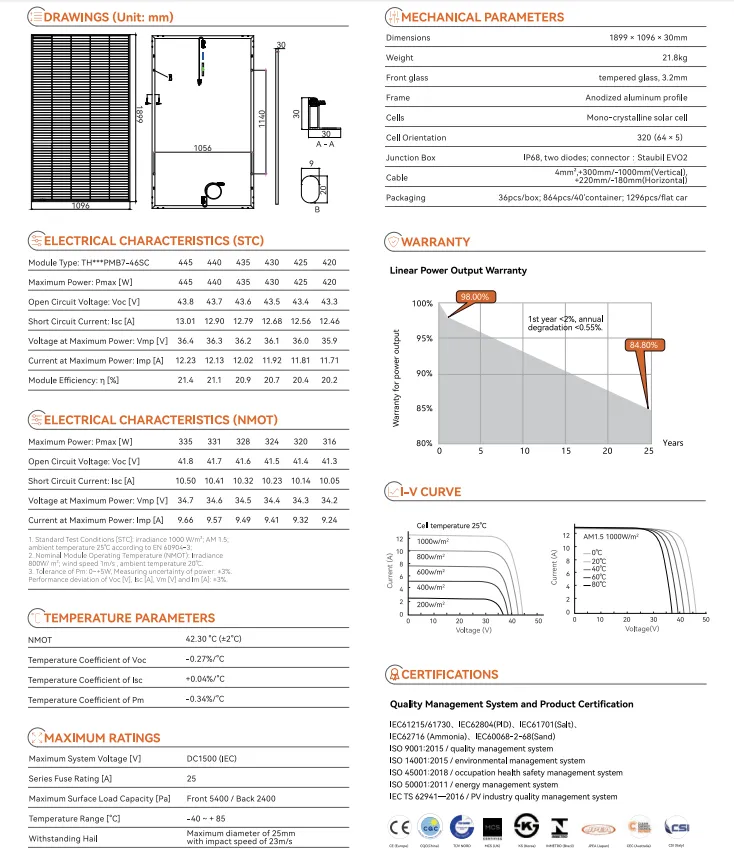solar panel frame dimensions
Understanding Solar Panel Frame Dimensions
When it comes to solar energy systems, the dimensions of solar panel frames are crucial for both installation and performance. A solar panel’s frame is typically made of aluminum, offering a lightweight yet sturdy structure that protects the solar cells from physical damage while providing a means to mount the panels securely. Understanding these dimensions is essential for homeowners, contractors, and engineers involved in solar installations.
Standard Dimensions
Most solar panels available on the market today feature standard dimensions. The most common size for residential panels is around 65 inches by 39 inches (about 1.65 m by 1 m). These panels usually have a thickness of about 1.5 to 2 inches (3.81 to 5.08 cm), including the frame. However, it's important to note that different brands and models may have varying dimensions, so checking the specifications before making a purchase is advisable.
The dimensions of the solar panel frame are designed to accommodate the solar cells while providing a protective envelope around them. The frame must be slightly larger than the solar cells it contains, which typically measure around 60 cells for residential panels. This extensive sizing ensures that the modules remain strong and can withstand harsh weather conditions, such as high winds and heavy snow loads.
Importance of Frame Dimensions
The dimensions of solar panel frames significantly influence a system's overall installation. A proper fit is crucial to maximize efficiency and functionality. If the frames do not align correctly with mounting systems, it can lead to installation challenges, potential damage, or inadequate positioning for energy capture.
solar panel frame dimensions

Moreover, the frame dimensions impact the solar panel's aesthetic appeal. Homeowners often prefer panels that complement their roofs or surroundings. Manufacturers can offer various frame colors and designs, but they must respect the industry-standard sizes to ensure compatibility with mounting equipment and inverters.
Installation Considerations
When planning an installation, it is crucial to consider the space required for the solar panels themselves and the necessary clearance for airflow and maintenance. Each solar panel's frame dimensions dictate how they will be arranged on the roof or ground. A precise layout allows for optimal sunlight exposure, ensuring that the solar energy system operates at peak efficiency.
Additionally, the attachment method can also be influenced by frame dimensions. Roof-mounted systems typically require specific mounting brackets that fit the solar panel frames snugly. Inappropriate dimensions can lead to improper anchoring, which may cause panels to shift or be dislodged during extreme weather events.
Conclusion
In conclusion, understanding solar panel frame dimensions is integral to the successful implementation of solar energy systems. With the common dimensions providing a baseline for most products, users must be mindful of the slight variances that may exist between manufacturers. A thorough consideration of these dimensions can lead to more efficient installations, better performance, and ultimately a more sustainable energy solution. Solar energy is the future, and every detail, including frame dimensions, plays a role in harnessing this powerful resource.
-
Unlocking Energy Freedom with the Off Grid Solar InverterNewsJun.06,2025
-
Unlock More Solar Power with a High-Efficiency Bifacial Solar PanelNewsJun.06,2025
-
Power Your Future with High-Efficiency Monocrystalline Solar PanelsNewsJun.06,2025
-
Next-Gen Solar Power Starts with Micro Solar InvertersNewsJun.06,2025
-
Harnessing Peak Efficiency with the On Grid Solar InverterNewsJun.06,2025
-
Discover Unmatched Efficiency with the Latest String Solar InverterNewsJun.06,2025







